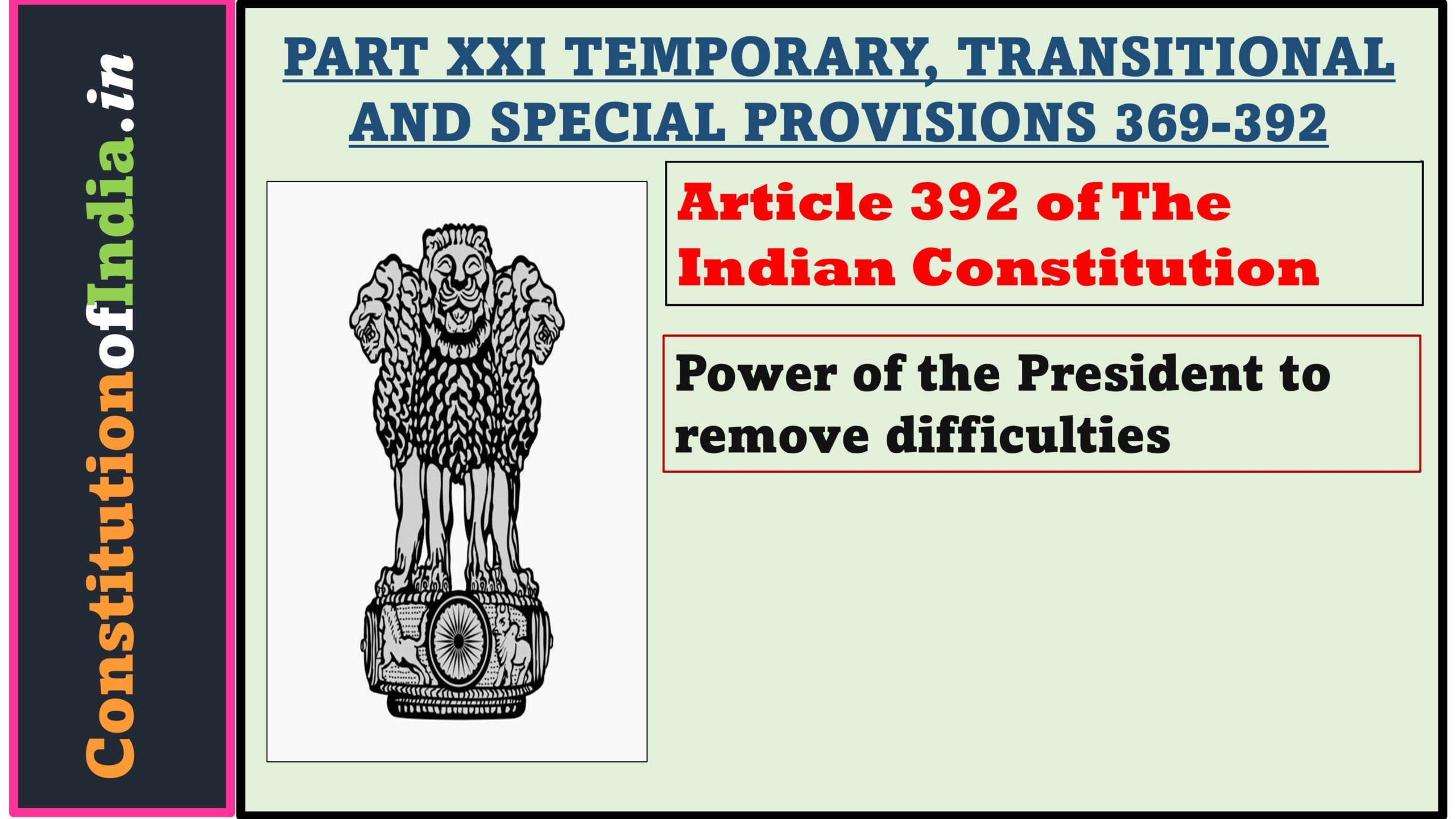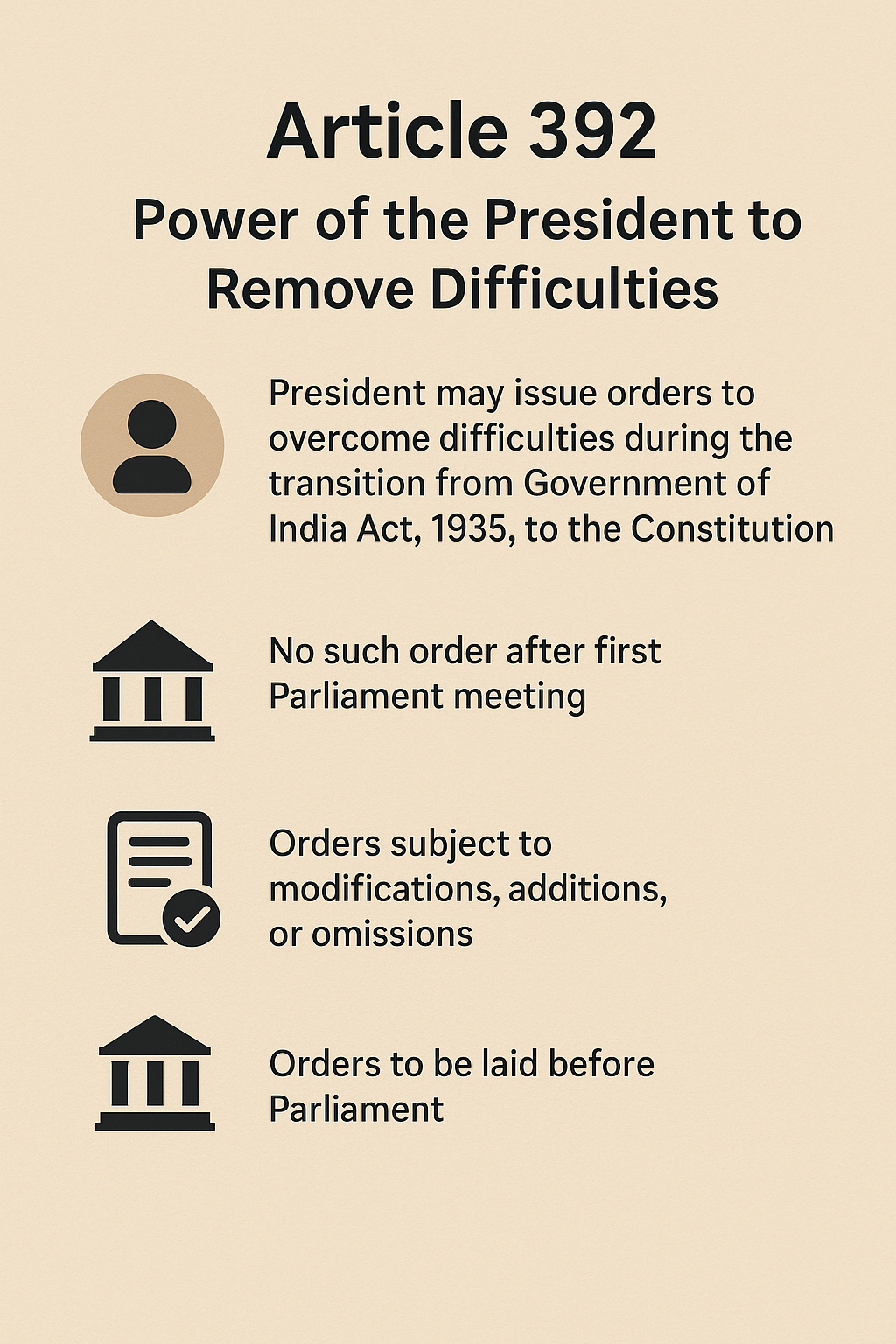Article 392 of Indian Constitution – Power of the President to remove difficulties.

Article 392 Power of the President to remove difficulties – Constitution Of India
392 (1) The President may, for the purpose of removing any difficulties, particularly in relation to the transition from the provisions of the Government of India Act, 1935, to the provisions of this Constitution, by order direct that this Constitution shall, during such period as may be specified in the order, have effect subject to such adaptations, whether by way of modification, addition or omission, as he may deem to be necessary or expedient: Provided that no such order shall be made after the first meeting of Parliament duly constituted under Chapter II of Part V.
(2) Every order made under clause (1) shall be laid before Parliament.
(3) The powers conferred on the President by this article, by article 324, by clause (3) of article 367 and by article 391 shall, before the commencement of this Constitution, be exercisable by the Governor-General of the Dominion of India.

FAQ on Article 392 – Power of the President to Remove Difficulties
Q1: What is the main purpose of Article 392?
A: Article 392 empowers the President of India to make provisions by order to remove any difficulties that arise during the transition from the Government of India Act, 1935 to the Constitution of India.
Q2: What kind of adaptations can the President make under this Article?
A: The President may make modifications, additions, or omissions to the Constitution as deemed necessary or expedient to overcome transitional difficulties.
Q3: Is this power of the President unlimited in time?
A: No. This power is temporary. The President cannot issue such orders after the first meeting of the Parliament constituted under the Constitution (i.e., the first elected Parliament).
Q4: What does the phrase “during such period as may be specified in the order” mean?
A: It means that any order made under this Article would only be valid for a limited duration, as mentioned in the specific order issued by the President.
Q5: Does Parliament have oversight over these orders?
A: Yes. Every order made under Article 392(1) must be laid before Parliament under Article 392(2).
Q6: Who had this power before the Constitution came into force?
A: Before the commencement of the Constitution (i.e., before 26 January 1950), this power was exercisable by the Governor-General of the Dominion of India, as per Article 392(3).
Q7: Is Article 392 still active today?
A: While the Article remains in the Constitution, its practical use was limited to the initial transitional period post-independence. The power expired after the first Parliament met in 1952, so it is now largely obsolete.
Q8: Why was such a provision necessary in the Constitution?
A: It was included to smoothly transition from the colonial legal framework (Government of India Act, 1935) to the new constitutional framework, ensuring there were no legal or administrative voids.